Ding ding:
A Hong Kong sound from an iron box
Ding ding:
A Hong Kong sound from an iron box
Photos and text by
Cecilia Chan, Daniel Ip, Jimmy Tsang and Sarah Yu
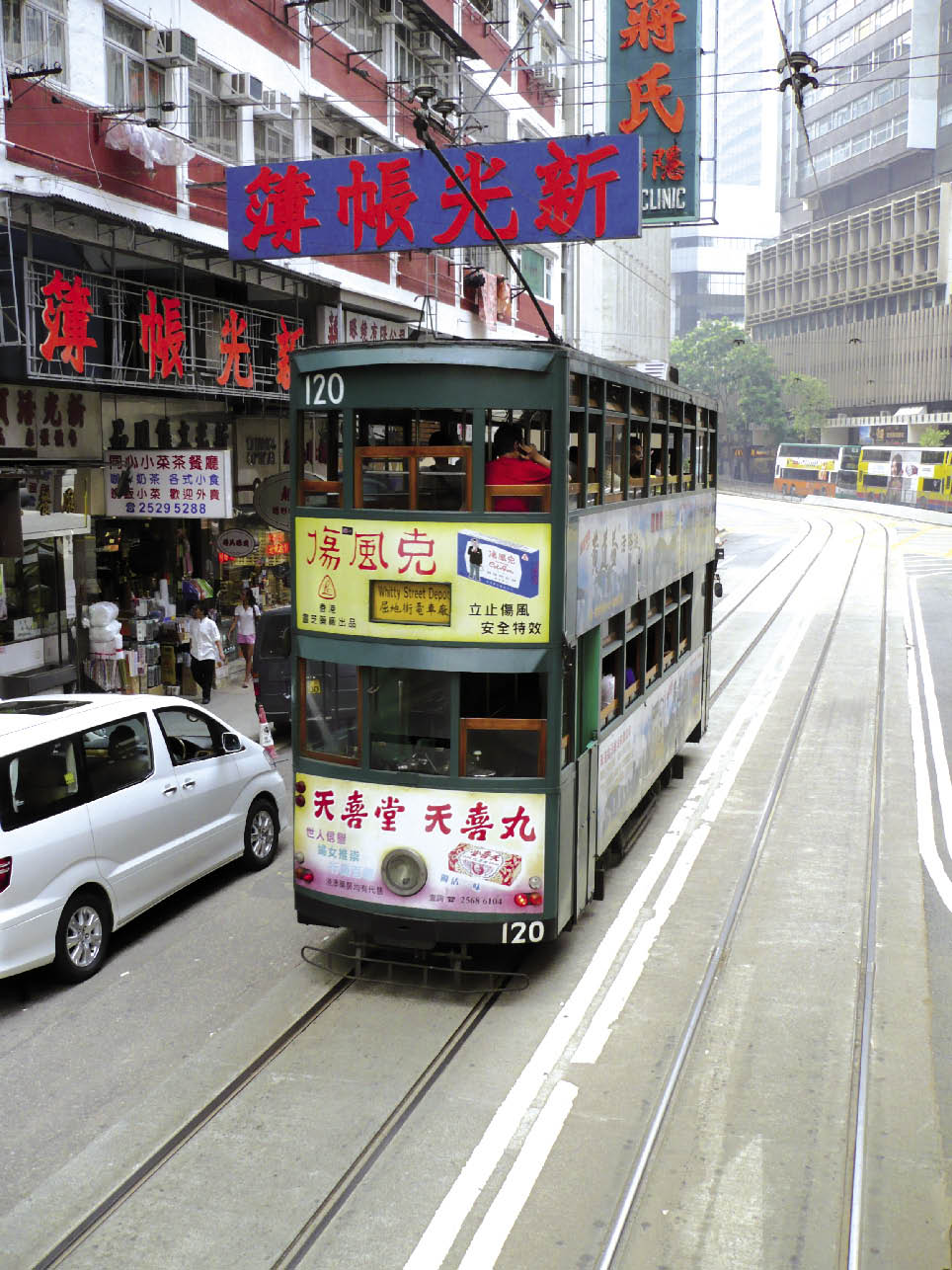


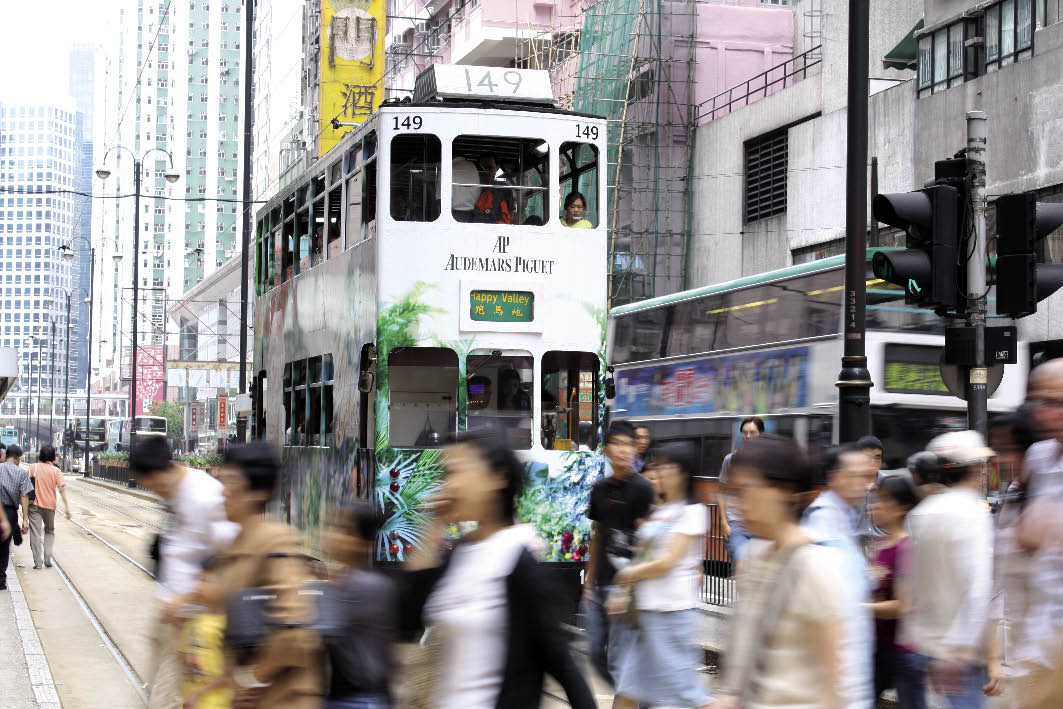
VARSITY
Trams move slowly through the hustle and bustle of the city.
Clanking slowly along the winding rails, the tram headed to a stop in Sheung Wan. An old man, a dollar in hand for his journey, was waiting there to get on board.
Leung, 71, was a bus driver for more than 30 years. While he now enjoys free bus rides in his retirement, he usually takes trams to go around Hong Kong Island.
“I prefer trams to buses,” Leung said. “I feel safe and it is comfortable on a tram.”
Trams also endear themselves to most elderly people by their slow speed. Ho Sau-fong, 79, who now lives in Canada, said she rides on the trams whenever she is in Hong Kong because they are slow and convenient.
“I enjoy sitting on the upper deck and observing other people,” Ho said while she recalled her happy memories on trams. She loved to ride on the tram with her boyfriend when she was young.
Many young people are also attracted to trams which are older than them. Eric Lee Tsun-lung, 24, a young tram lover, makes tram models. He is also the founder of “Tram’s Friend”, a locally registered organisation that holds regular gatherings with those who share an interest in trams.
Lee said that trams in Hong Kong are unique. “They have a long history and they are not found in other countries anymore,” said Lee.
Trams started moving on the Hong Kong Island in 1904. Hong Kong is now the only place in the world that runs a double-deck fleet of trams.
Today, there are 163 trams running on the island from east to west every day on a 13-km track between Shau Kei Wan and Kennedy Town, and around Happy Valley.
Costing HK$2 for adults, the trams are very popular with locals. During rush hours, people going to work or heading home will crowd at tram stops and try to cram into one of the trams.
Some may find trams hot and stuffy during peak hours in summer as trams do not have air conditioning. However, this does not prevent people from riding them. University student Cheung Kit-wa said she likes trams because it is more environmentally friendly.
Cheung has taken the tram to school every day since her primary school years. To her, the most impressive thing about trams is their “ding ding” sound.
The “ding ding” sound produced from the trams is to alert pedestrians of their approach. No wonder that trams are called by the locals as “ding ding”.
Yet, this familiar “ding ding” sound has started to fade. A tram driver Yeung Wing-sing said: “A louder horn is used today.” Yet, one can still hear the “ding ding” sound when they step on a particular button on the floor at the rear of the lower deck.
With the horn used to alert pedestrians, Yeung still finds it dangerous to drive the tram because some people think that it is safe to walk on the tram rails. “Delivery staff always ignore safety regulations and even ride bicycles in front of the trams,” said Yeung.
But the older generation of tram drivers faced more difficulties in their work. Poon Bong-kin, a retired tram driver, said he used to have lunch on the tram since there were no lunch breaks. Today, drivers have a half an hour break for lunch.
According to Poon, trams have changed over the last few decades. There was a time when someone sold tickets at the rear of the tram while another person punched holes in the tickets before passengers got off the tram.
Poon said that in the 1970s, tram drivers heard the clanging sound of coins when passengers dropped them into the collection box next to the driver. The tapping of the octopus card has now largely taken the place of coins.
Operating for over a century, trams have witnessed Hong Kong’s highs and lows. A tram lover from the Universal Transport Fans Association, Dennis Law Chung-yan, said the tram rails also reflected the changes of the city.
“The tram rails were built along the original coastline of Hong Kong Island. Today, the tracks appear to be laid in the inner part of the city,” said Law. “Then, you could notice the reclamation work done.”
Although the city has changed a lot, some trams continue to operate without too many changes. The number 120 tram, manufactured in the 1950s, is the only locally made tram left in Hong Kong which is still in service.
Meanwhile, tram number 200, a specialised maintenance tram, operates in the early hours of the morning to clean the track rails. It is parked at the Witty Street Tram Depot and also helps move trams around for maintenance.
Two open-balcony antique trams are provided for tourists and private hire, charging around HK$1, 000 per hour. For a lower price, Cathy Lee Ho-man organised a birthday party on an ordinary tram.
“It was a special experience,” said Lee. “We could move around in the tram freely. The feeling was very different from travelling on a usually crowded tram.”
Michael Wong Ga-chun found the tram party a great experience. He shouted and waved to people in the streets.
Queenie Mak Wah-yan, also enjoyed the party on the tram. She said that it is convenient for her friends to join the party at different places as the tram moved through the city.
Alan Cheung Shun-kwong, vice-chairman of the Hong Kong Collectors’ Society, likes the tram routes which bound people from all walks of life together. “The trams links up the whole of Hong Kong Island,” Cheung said.
Cheung said the tram runs from shabby buildings in Kennedy Town to skyscrapers in Central, also through the busy streets in Causeway Bay and the wet markets in North Point. “We can meet different faces of the city on one ride, which is a terrific experience,” he said.
Cheung was a tram lover since he was young and he has collected many tram-related treasures, like pictures of old trams, old tram tickets, ticket hole punchers and even tram seats.
Trams move slowly through the hustle and bustle of the city and appeal to both locals and foreigners.
On a Sunday afternoon, a foreign tourist travelled on tram with his local friend, who pointed here and there, showing him landmarks and sightseeing spots on the island.
The tourist stared curiously outside the wooden glass windows. To him, everything seems to be fresh, from salty fish hanging outside shops in Sai Ying Poon, to the crowd of Filipino maids who were having their parties in Central. 
1: Tram models made by Eric Lee Tsun-lung.
2: Trams are numbered for their identities.
3: Trams endear themselves to most elderly people.
4: Long queue is always found at tram stops during peak hours.
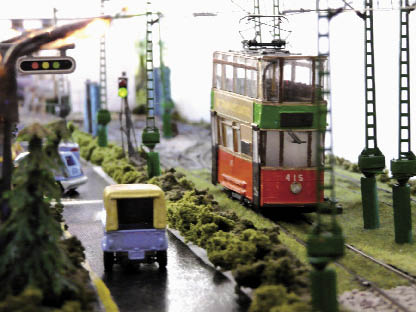
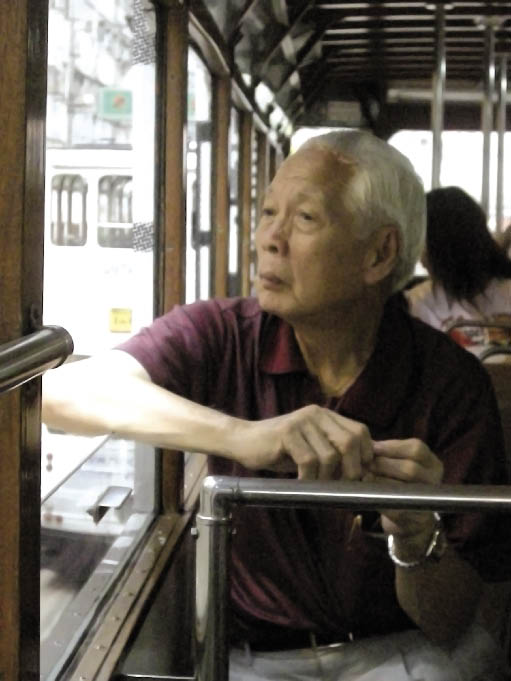
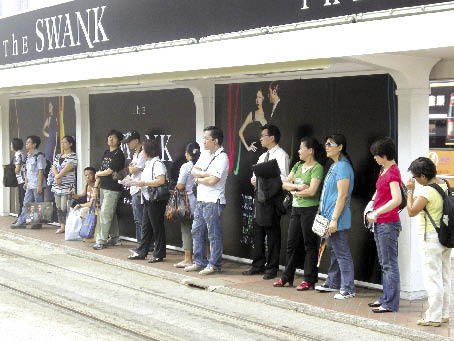
1
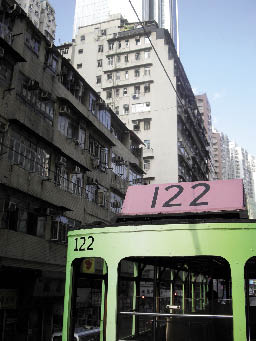

2
3
4

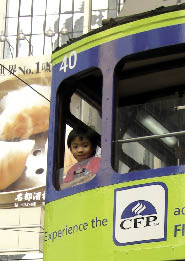
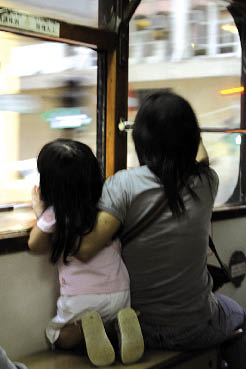
5
6
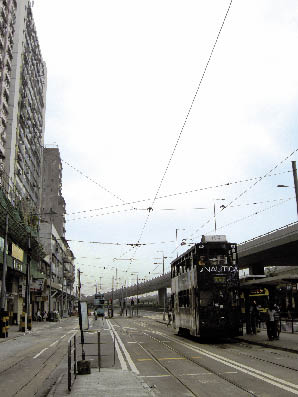
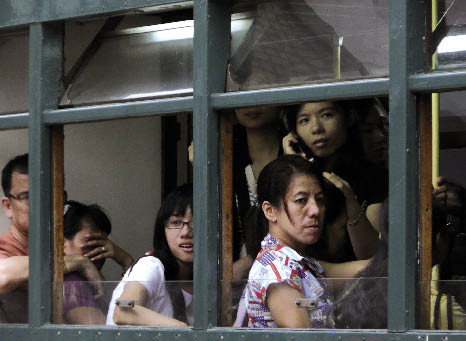
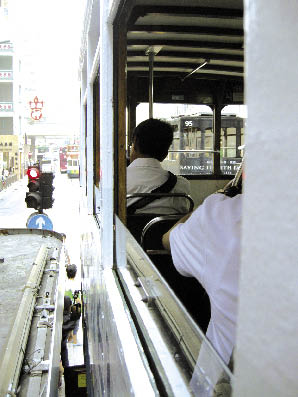
7
9
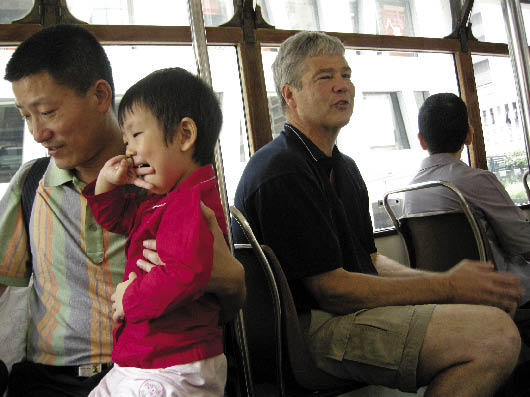
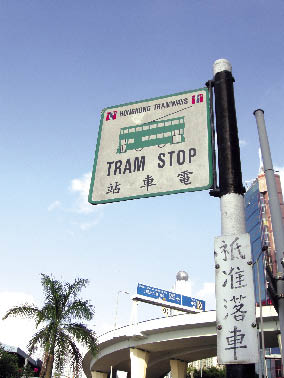
8
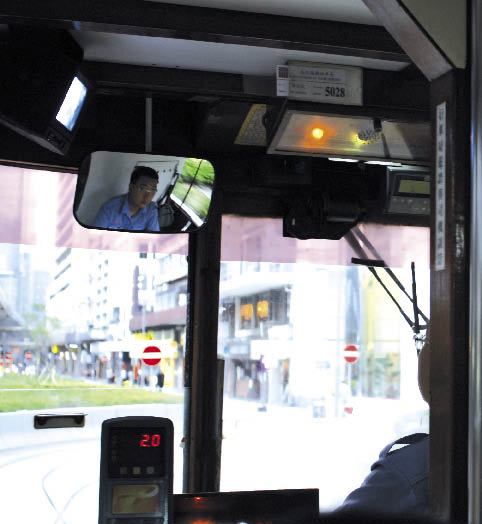
5-6: Kids are interested in what is happening on the street.
7: People may find crowded trams hot and stuffy in summer.
8: A father and his kid are enjoying a ride on the tram.
9: Some people prefer sitting on the upper deck for a better view of the city.
10-13: Drivers are at work.
10
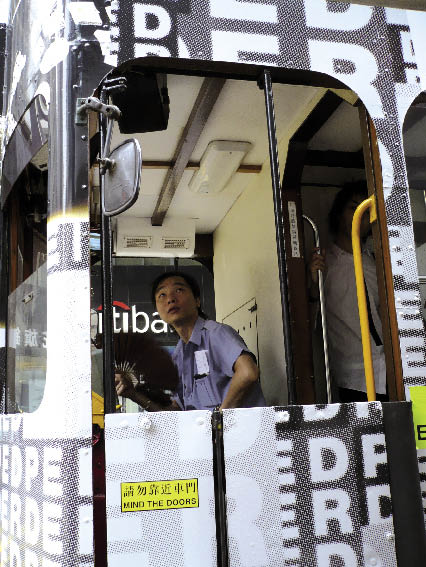
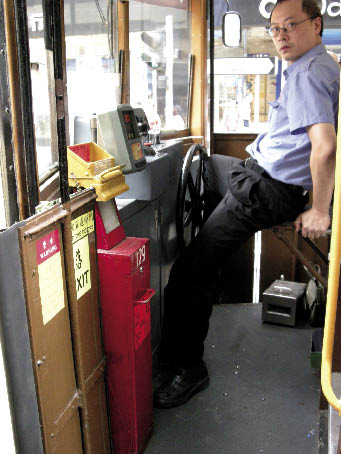
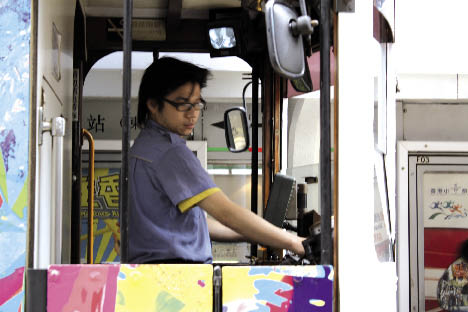

11
12
13

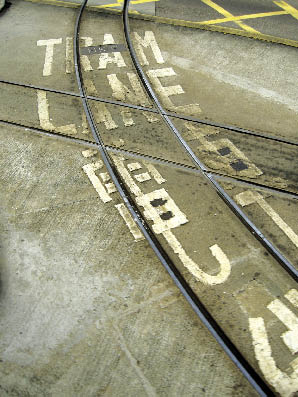
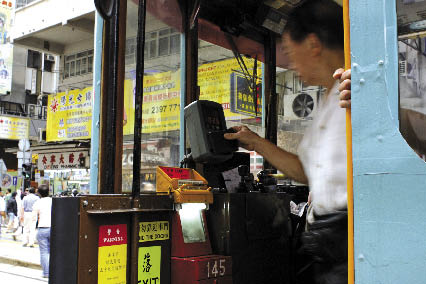

Octopus card has largely taken the place of coins now.
Tram rails witness the changes of the Island’s coastlines.
VARSITY
14
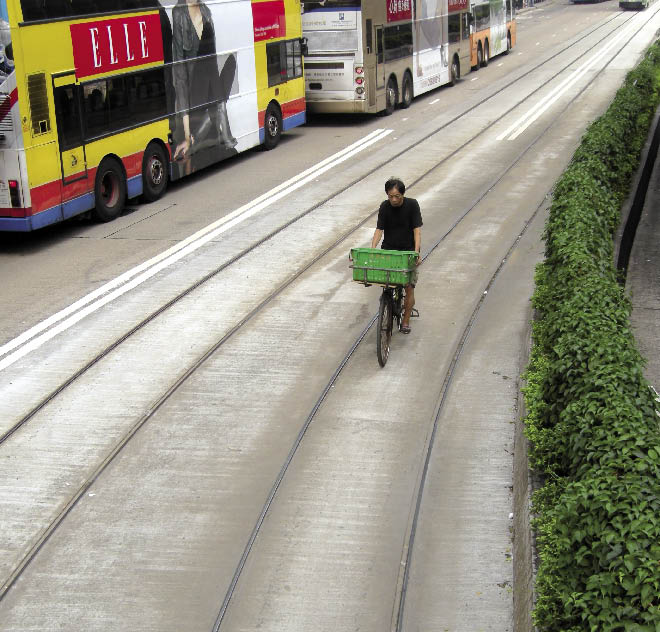
15
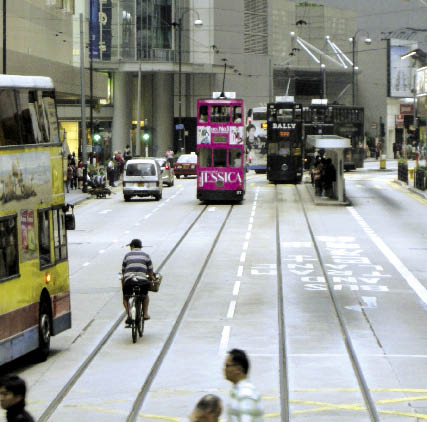
16
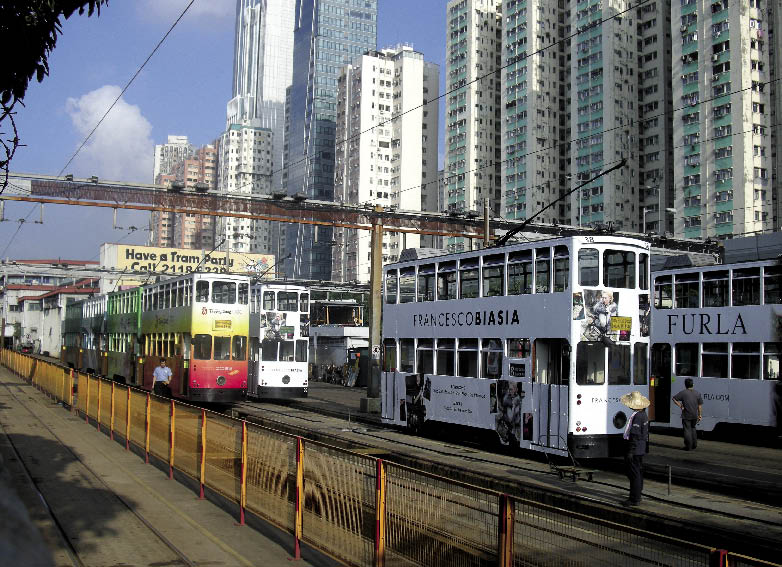
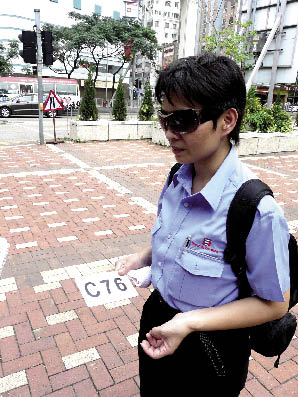
14-16: People think that it is safe to ride on the tracks.
A tram ticket, with lucky numbers, is still kept by an elderly passenger.
17
17: Drivers use “track number cards” to indicate their driving routes.
18: People going to work or heading home are tryinig to cram into the tram.
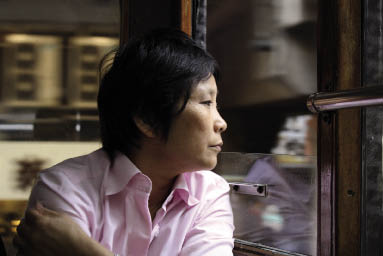
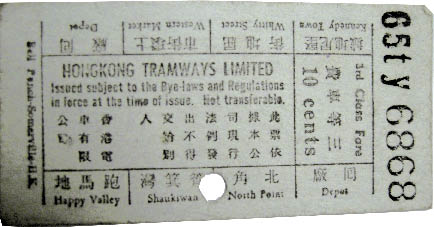
The Witty Street Depot is parked with a lot of trams, including tram number 200.
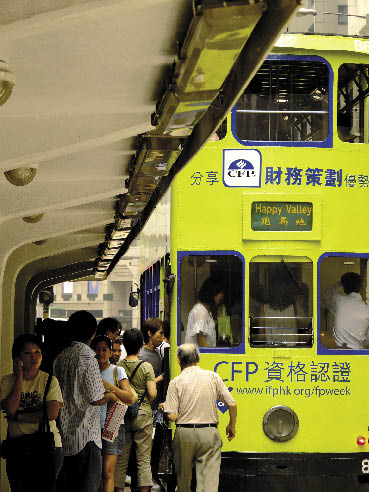
18

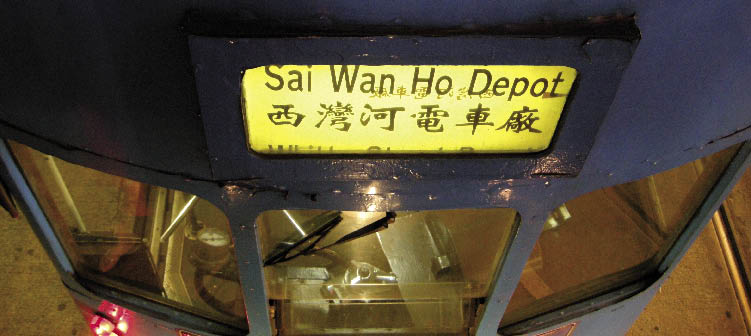
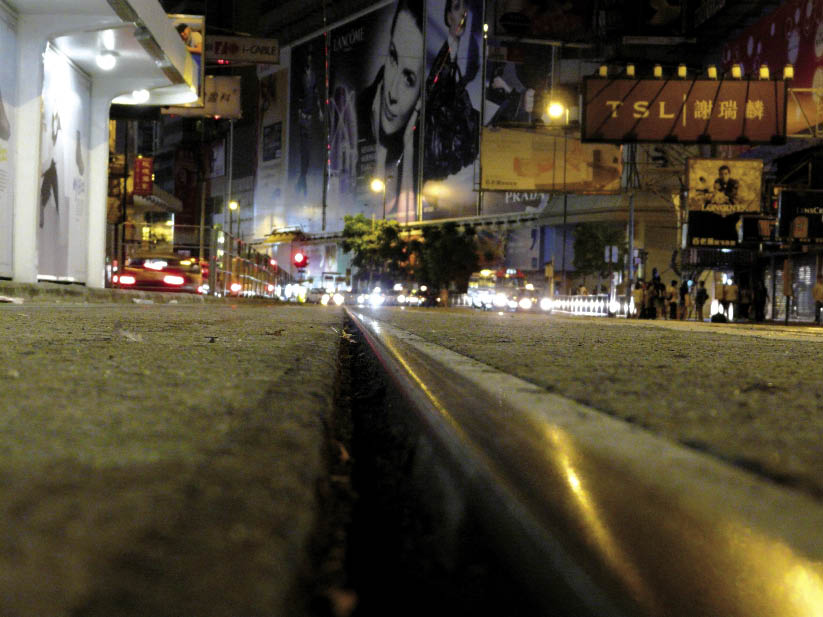
VARSITY
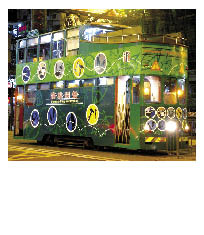
The specialised maintenance tram number 200 operates only in the early hours.
COURTESY PHOTO OF JOSEPH TSE